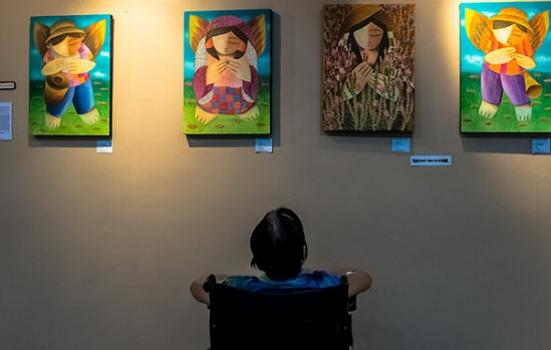A new report aims to improve the way arts interventions are designed and measured and pave the way for further research.

Seth Capitulo on Visualhunt / CC BY
A new report seeks to explain the positive impact of the arts on health and wellbeing by naming the ‘active ingredients’ that lie behind such outcomes.
Research by Aesop and BOP Consulting has identified a set of key values – including curiosity, experimentation and social interaction – that give arts and health interventions their “power and richness”.
It hopes that a better understanding of why arts activity makes a difference will improve the way interventions are designed and measured, and pave the way for more research about which approaches produce specific wellbeing outcomes.
“I hope the project will be a confidence-booster for the arts sector,” said Tim Joss, Chief Executive and Founder of Aesop. “For at least 20 years, they’ve had this concern about being instrumentalised – just an additional resource for health and other sectors, and not valued artistically.
“Using ‘active ingredients’ they can communicate the unique power of the arts and be proud partners of other sectors.”
Learning from medicine
The Active Ingredients report builds on Aesop’s success with its Dance to Health programme, which was found to be more effective at preventing older people from falling than NHS schemes.
It says that arts practitioners currently have “limited knowledge” of which elements of experiencing the arts, and in which combinations and settings, contribute to positive social outcomes for participants.
According to the report, this problem is exacerbated by the fact that much knowledge is held by specific artists working on specific projects. It says that change is necessary to disseminate good practice and help arts interventions scale up.
The authors say that the current situation “often manifests as a lack of awareness of the options for, and effectiveness of, arts-based interventions; a lack of confidence in the efficacy of complementary approaches; and a lack of understanding about the circumstances in which arts-based interventions would be more, or less, appropriate”.
In response, the project has developed a ‘logic model’ setting out the inputs, outputs and outcomes in an arts and health process – including suitable venues, workshops and the discovery of cultural identities – and isolating the “active ingredients” that effective projects involve. These comprise:
- Social interaction
- Arousal of curiosity
- Sense of expectation
- Feeling of safe space for expression
- Encountering the other
- Sense of possibilities
- Scope for experimenting
- Trying new modes of expression / building on old forms.
The report hopes to help organisations plan successful projects by asking questions like ‘how can participants be made to feel they are in a safe space?’ and ‘how does the programme support participants to experiment with new and old modes of expression?’
Commenting on the report at a launch event, NHS England Director of Personalised Care James Sanderson described the report as a “game changer”.




